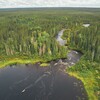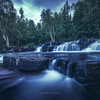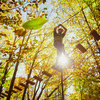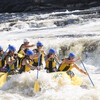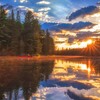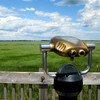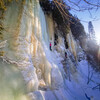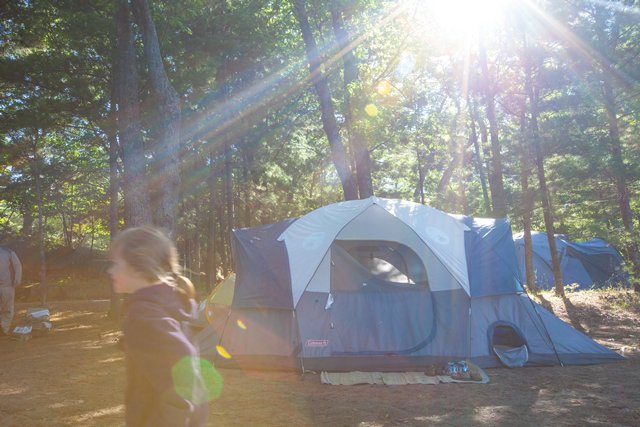
Go on a Self-Guided Tom Thomson Tour in Algonquin Park
The timeless beauty of Algonquin Park has long captivated visitors. Fortunately for Canada and the world, one of those enchanted by Algonquin was Canadian artist, Tom Thomson, whose painting and passion for the Ontario wilderness influenced the Group of Seven.
After a life-changing sketching trip to Algonquin, the painter found his calling working outdoors and drawing inspiration from the land. Thomson’s oil studies were often done quickly, outside and in difficult conditions. They place the viewer right in the centre of what he was attempting to capture: Autumn colours cascading into a northern lake, a sliver of swampy river crowded by tilting black spruce, an unexpected waterfall deep in the forest, wind scudding clouds across a sunset-lit sky.
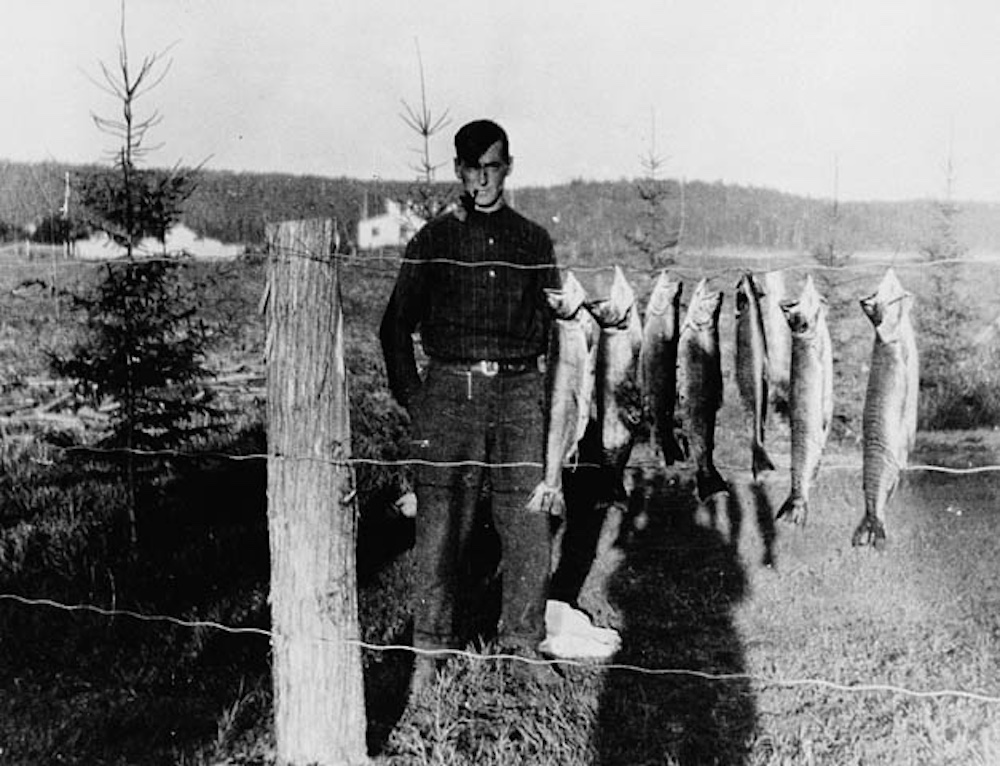
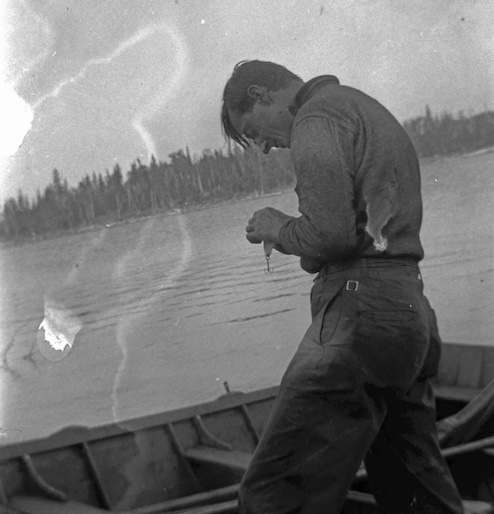
From 1912 to 1917, Tom Thomson travelled the lakes, rivers and portage trails of Algonquin in his distinctive dove-grey cedar-canvas canoe, finding the inspiration and solitude he needed to develop his own unique artistic style. Since his mysterious death in 1917 on Canoe Lake in Algonquin Park, his paintings have become synonymous with the Canadian identity. As art historian David Silcox writes, “Thomson's paintings are the visual equivalent of a national anthem."
More than a century after his death, Tom Thomson continues to inspire and enthrall artists, writers, paddlers and wilderness lovers alike. Whether you are a fan of Canadian landscape art, or simply curious about the life of this self-taught artist, the Park offers a timeless connection to one of Algonquin’s most iconic figures.
Tom Thomson Painting Sites in Algonquin
During his time in Algonquin, Tom Thomson spent up to six months each year canoeing, camping and painting in the Park. From his basecamp on Canoe Lake, Thomson roamed throughout the Park, sketching and creating studies for larger works he later finished in his Toronto studio during the winter months. Today, you can paddle or hike to the very same vistas that so enchanted Thomson.
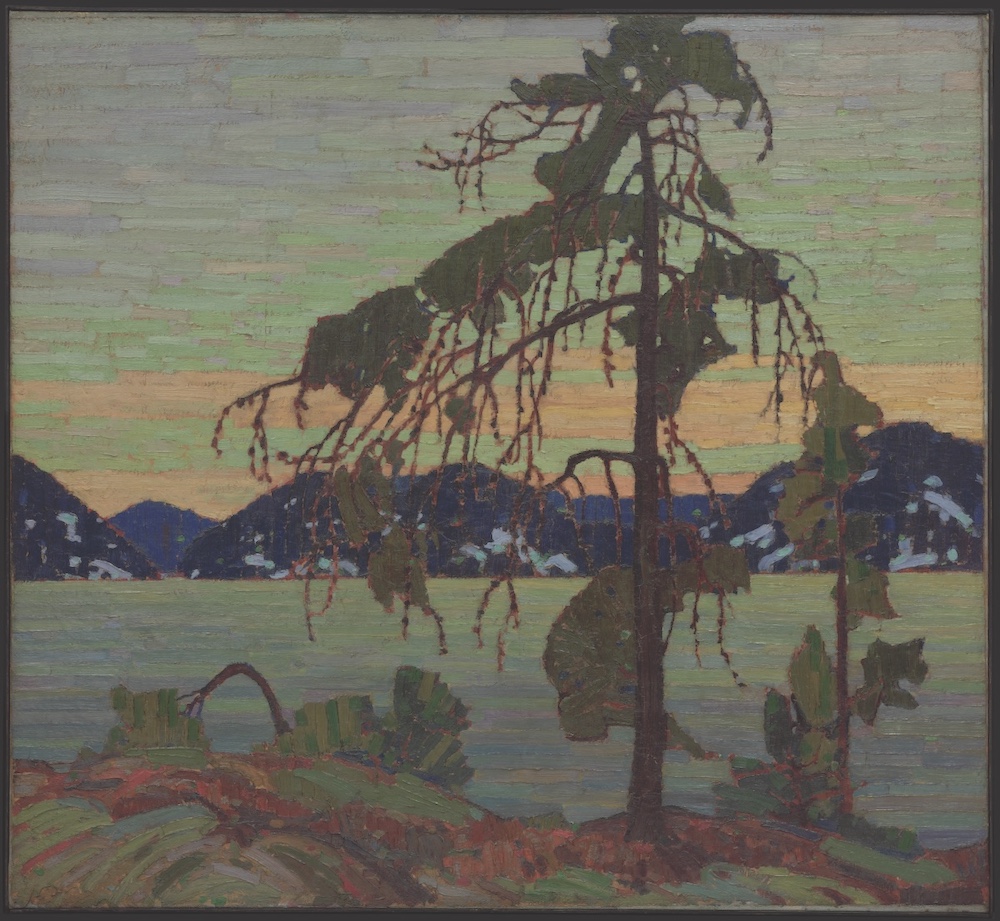
Grand Lake – The Jack Pine (1916-17)
One of Tom Thomson’s most iconic paintings, The Jack Pine is the image many people recall when they think of the artist and the Group of Seven. More than a century later, the tree itself is gone, but you can view similar scenes on a short hike along Grand Lake, accessible from Achray Campground on the Park’s east side.
How to see it: From Grand Lake - Achray Access Point #22, hike the Jack Pine Trail (1.6 km) which takes you to the scenic point where it’s believed Thomson sketched his famous painting. Gaze across to the distinctive hills of Carcajou Bay and marvel at Thomson’s mastery of colour and perspective.
- In the summer of 1916, Tom Thomson worked as a fire ranger, based out of the “Outside-In” ranger cabin, which still stands in Achray Campground. He created several paintings from the front porch and sites nearby, including View over a Lake, Autumn. Book a campsite or yurt at Achray Campground to extend your stay and learn more.
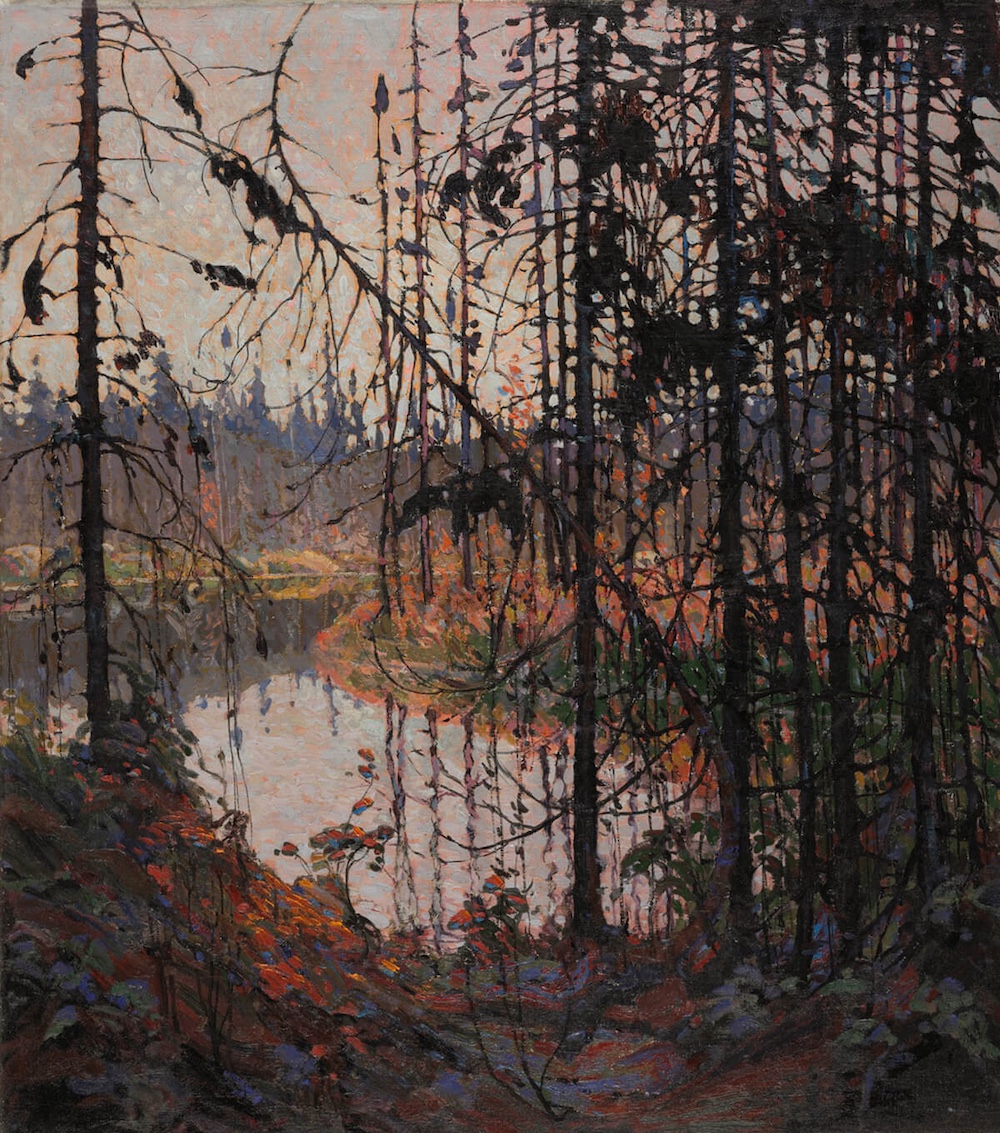
Oxtongue River – Northern River (1914-15)
Thomson’s first real tour de force, Northern River, placed the painter firmly in the realm of great Canadian artists. Harnessing his mastery of light, line and colour, Thomson guides your eye into and around the canvas, transforming a common Algonquin Park scene into an extraordinary one. The intimacy of the scene makes it hard to place, but local Algonquin Park artist and Group of Seven muralist, Gerry Lantaigne, is convinced it is the Oxtongue River, which Thomson paddled on a 1914 canoe trip from Canoe Lake to Huntsville with fellow artist and friend, A.Y. Jackson.
How to see it: Launch your canoe at Oxtongue Lake or the Oxtongue River bridge on Highway 60 and paddle upriver (1 km) to Ragged Falls, where the river makes a sweeping turn at the base of the falls.
- Take the short hiking trail (1 km) to the top of Ragged Falls for spectacular views. If you’re here in autumn, marvel at the fall colours Thomson captures so deftly in Northern River.
- Algonquin Outfitters store at Oxtongue Lake offers equipment rentals and maps for the popular half-day self-guided canoe trip to Ragged Falls.
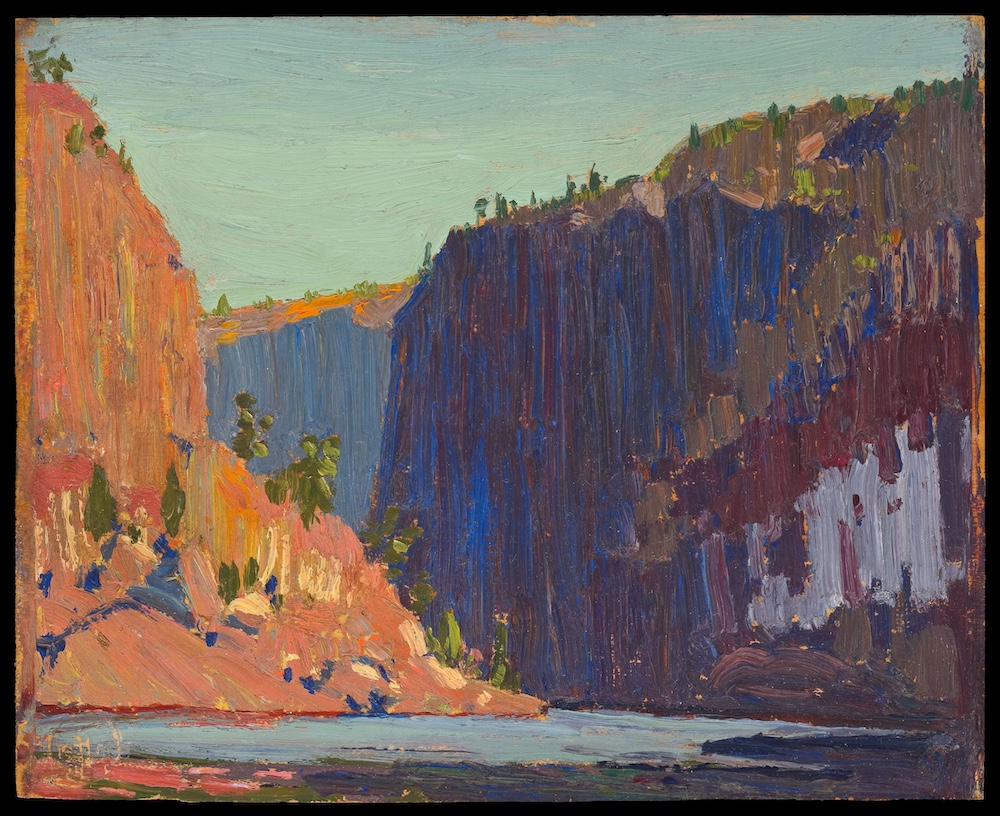
Barron Canyon – Petawawa Gorges (1916)
In Tom Thomson’s time, the Barron River was known as the South Branch of the Petawawa. The impressive 100-metre cliffs of the Barron Canyon captivated Thomson, and he painted several sketches here in the fall of 1916. Forest fires in the late 1800s had left the rock walls bare of trees when Thomson paddled his canoe into the gorge, but the striking form of the canyon remains instantly recognizable.
How to see it: Launch your canoe at Barron River - Squirrel Rapids Access Point #22b, just past the Park’s Sand Lake Gate, and paddle upriver (5 km) to the start of the Barron Canyon. There’s one portage (350 metres) around Cache Rapids en route. Look for the small island just downstream from where Hardwood Creek falls into the canyon. Pause here and gaze west into the canyon; Tom Thomson chose this exact spot to compose Petawawa Gorges.
- Don’t miss the short loop hike (1.5 km) on the Barron Canyon Trail, which leads visitors to the lofty precipice of the canyon rim for more breathtaking views.
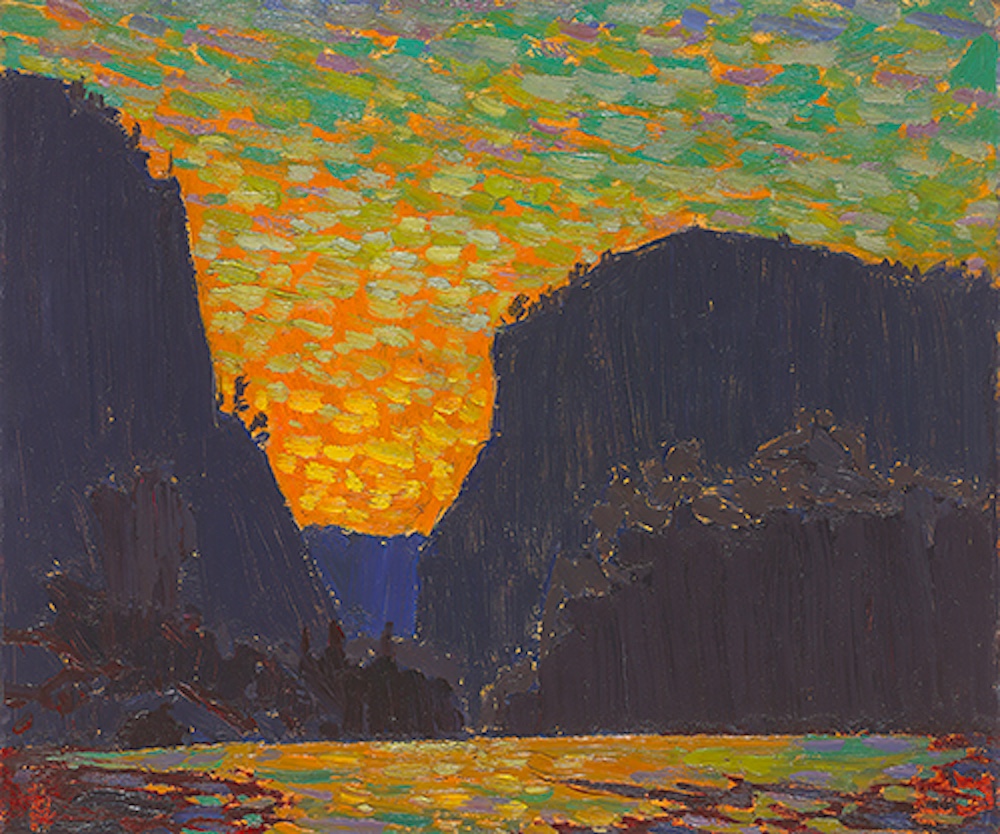
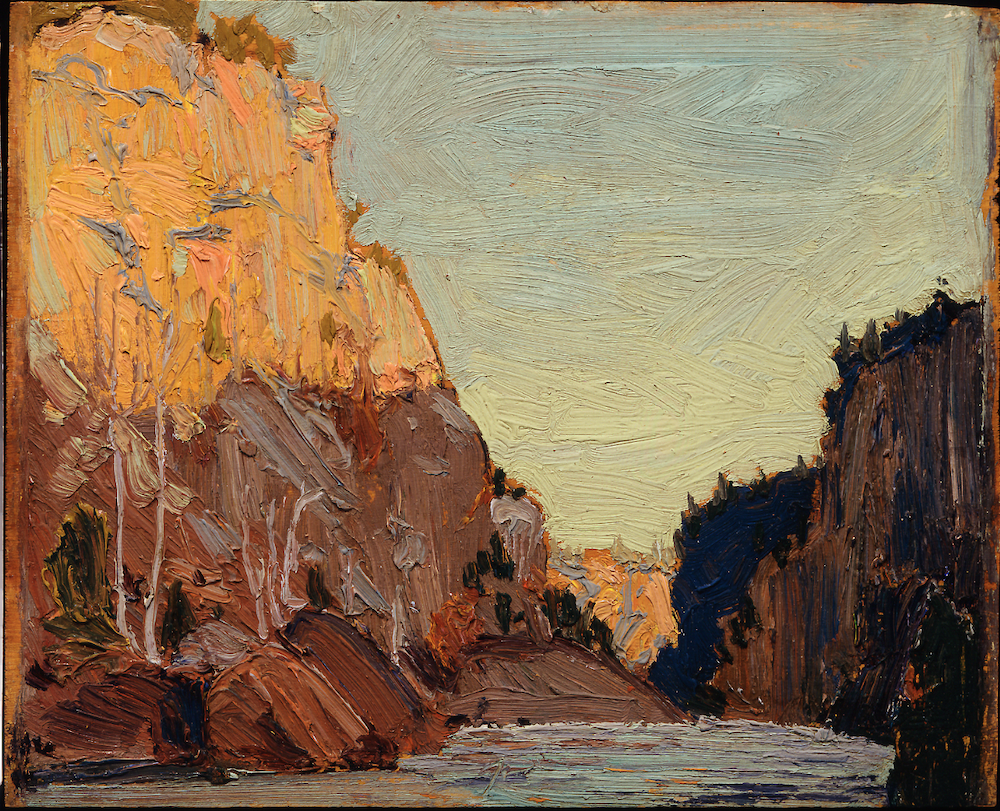
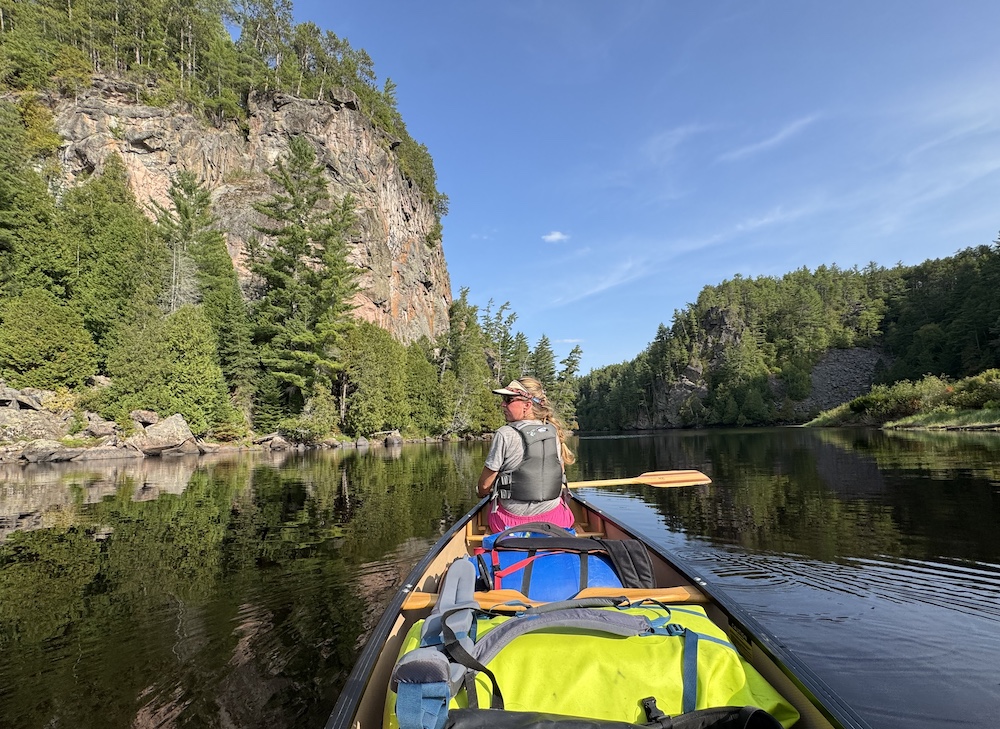
The Natch – Petawawa, Algonquin Park (1916) & Petawawa Gorges, Night (1916)
During Tom Thomson’s last full summer in Algonquin Park, he worked as a fire ranger stationed on the Park’s east side. In his role as ranger, he undertook a canoe trip down the Barron River and up the Petawawa River to Lake Travers. It was physically demanding work, cutting portages, servicing shelters, and hauling canoe and pack. Thomson wrote to his patron that fall, “There’s no place for a sketch outfit when you’re fire ranging.” Yet it seems the artist did manage to produce two oil sketches on the trip, both of the spectacular cliff known as The Natch, found on the lower Petawawa River.
How to see it: The Natch is a highlight of the classic, three-day whitewater canoe trip (50 km) down the lower Petawawa River from Lake Travers Access Point to McManus Lake. Running the Pet’s many class I-III rapids is a thrilling weekend adventure for intermediate-to-advanced whitewater paddlers. Plan your trip for late summer to enjoy optimal flows, warm water and golden evening light at the Natch campsite.
- Rent whitewater canoes, arrange a shuttle, and get trip planning advice from Algonquin Portage or Algonquin Bound Outfitters.
- Join a guided trip down the Petawawa with Black Feather (four days), MHO Adventures (five days) or Esprit (four days). You’ll develop paddling skills, learn about Park history and ecology, and enjoy the safety and camaraderie of a guided group experience.
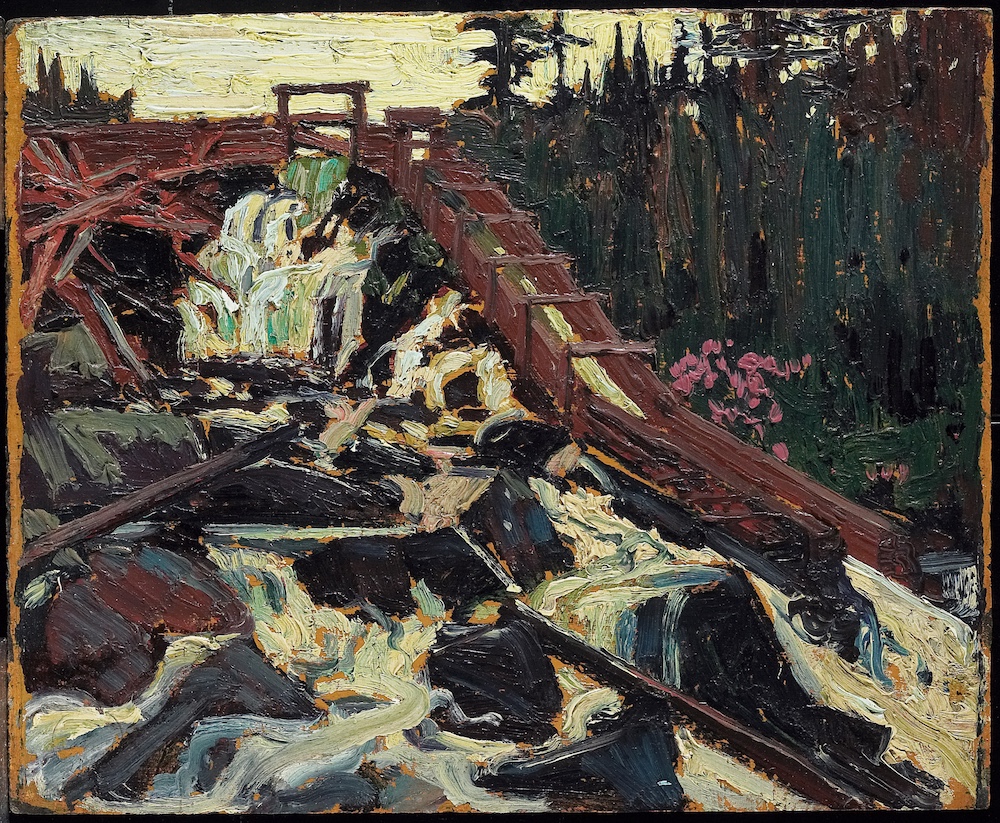
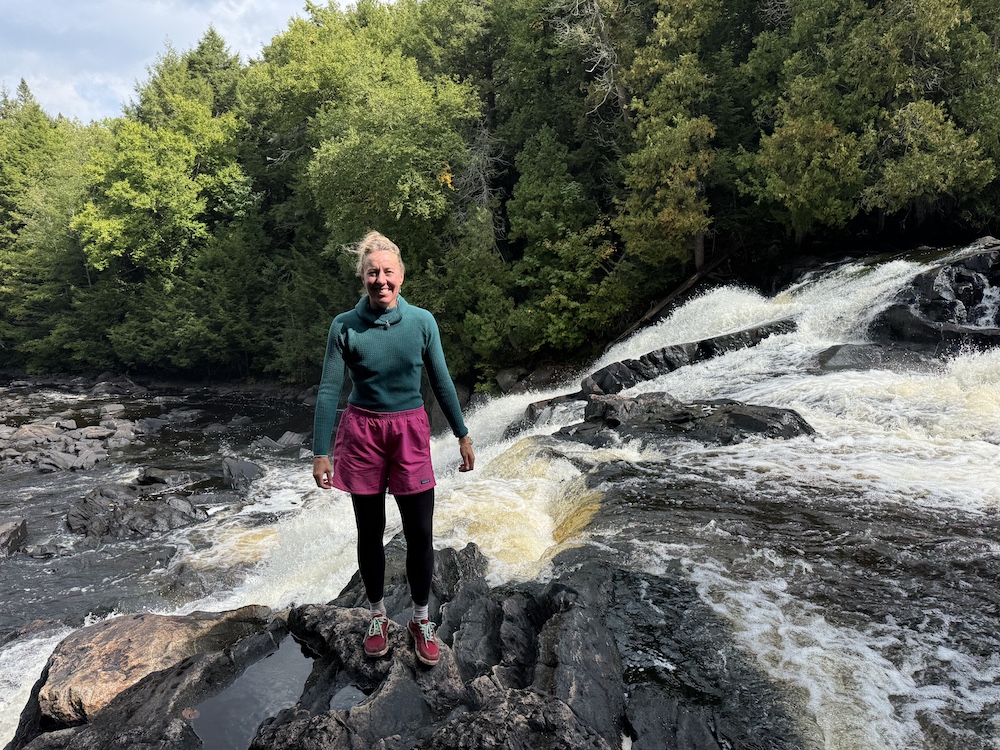
Hollywood Falls – Timber Chute (1915)
The natural beauty of Algonquin Park was not the only subject of Tom Thomson’s painting; he also captured the industry of the Park’s early logging era. By 1915, Algonquin had already undergone five decades of extensive logging. Amphibious, steam-powered “Alligators” hauled logs overland, distinctive pointer boats plied the lakes and rivers, and wooden chutes 30 metres or more in length allowed timber to bypass hazardous falls and avoid logjams. It’s believed Thomson painted Timber Chute near the south shore of Cedar Lake, at a dramatic cataract now known as Hollywood Falls.
How to see it: From Cedar Lake - Brent Access Point #27, paddle south across Cedar Lake (2 km) to where the Petawawa River enters the lake. Take the 690-metre portage upstream to view the falls tumbling through a narrow gorge. Don’t miss a second, even more impressive waterfall just a kilometre upriver.
- Book a campsite or rent a restored ranger cabin at Brent Campground to enjoy the lovely beaches and islands of Cedar Lake. Explore the remains of the historic Brent Station, a lively railway village in Thomson’s day.
- Rent canoes and equipment from the Algonquin Outfitters Brent Store.
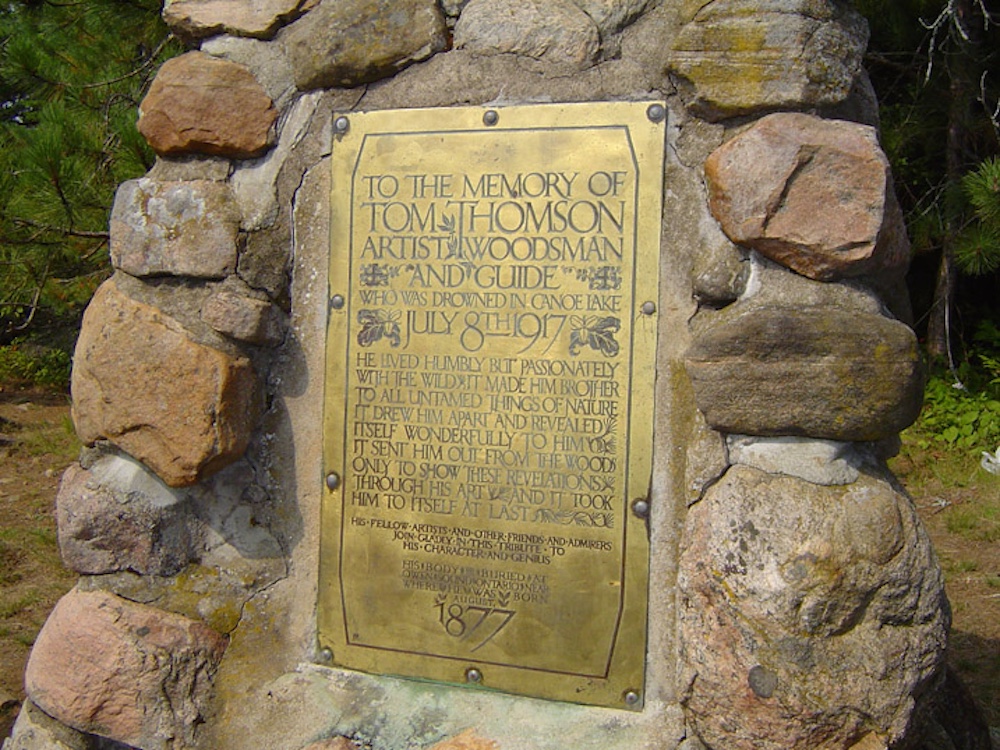
Tom Thomson Memorial in Algonquin
No place in Algonquin Park embodies Tom Thomson’s life, art and mysterious death more than Canoe Lake. Some of the artist’s greatest works were inspired within a few miles of the launch, easily accessible from Highway 60 at kilometre 14.1.
Launch your canoe at Canoe Lake Access Point #5, where you’ll also find a Tom Thomson historic plaque. View the replica murals of Thomson’s Spring Ice and Autumn Foliage in The Portage Store, where you can also get a “Tom Thomson burger,” buy maps and gear, and rent canoes and equipment.
Paddle up the lake, about 1.5 hours, to Thomson's favourite campsite, where his friends in the Group of Seven placed a memorial cairn after his death. After paddling past Wapomeo Island, look north and head towards the Canadian flag on Hayhurst Point. Follow the shoreline to the left of the point until you see a dock and a small rocky area where you can land your canoe. Hike up the short, steep trail to see the cairn and a large totem pole with scenes symbolizing the artist’s life—erected in Thomson’s memory by Camp Ahmek of Canoe Lake—nestled among tall red pines, spruce and poplars.
Take a moment to ponder the haunting beauty, and mystery, of this landscape. Tom Thomson paddled away from the dock on Canoe Lake for the last time on July 8, 1917. He never returned. His upturned grey canoe was found floating near Wapomeo Island and his body surfaced eight days later. Was it an accident, or murder?
Thomson was an avid paddler, angler and outdoorsman who worked as a canoe guide in the Park to support his painting. The weather that July day was fine. After his death, a gash was noted across his temple—perhaps from being struck with a paddle.
Those curious about Thomson’s life and untimely death should read Northern Light: The Enduring Mystery of Tom Thomson and the Woman Who Loved Him by Canadian author Roy MacGregor.
Guided Tom Thomson Tours in Algonquin
Discover the rich history and stories of Algonquin Park on a guided canoe excursion with master guide, Mike Sladden. Offered as a day trip from The Portage Store at Canoe Lake (July through early September), Algonquin Outfitters’ Legacy and Lore: Tom Thomson Tour unravels the mysteries surrounding Canada’s most iconic artist.
Paddle past legendary sites, hear captivating stories, and walk the remnants of Mowat ghost town, once a booming mill and rail village. Discover how Algonquin Park came to be and form your own theory about Thomson’s fate.
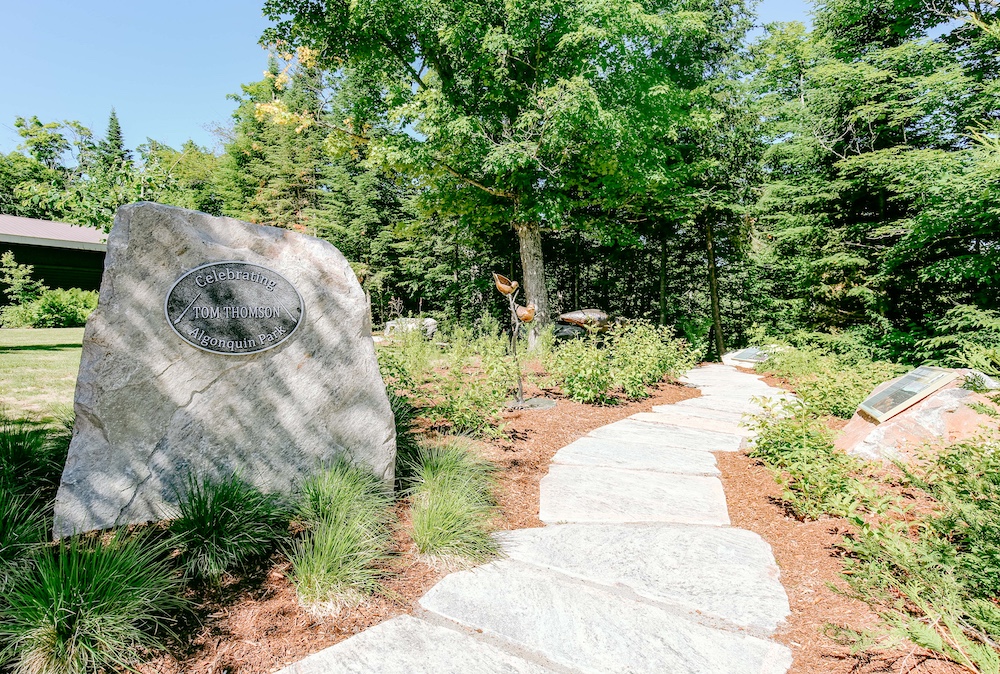
Photo: Sabrina Grooms
Top Tom Thomson Exhibits in Algonquin
During your visit to the Park, be sure to stop in at the Algonquin Art Centre, located at kilometre 20 on Highway 60, to explore the Tom Thomson Legacy Path. Created in collaboration with the Friends of Algonquin Park, this outdoor exhibit includes interpretive panels that share the story of Tom Thomson’s time in Algonquin Park.
The centre is open daily from 10 a.m. until 5 p.m. Admission to the galleries, Legacy Path and boutique is free, but a valid Park permit is required for your vehicle. In July and August, you can join a pop-up art class or pick up a self-directed art kit. Find out more.
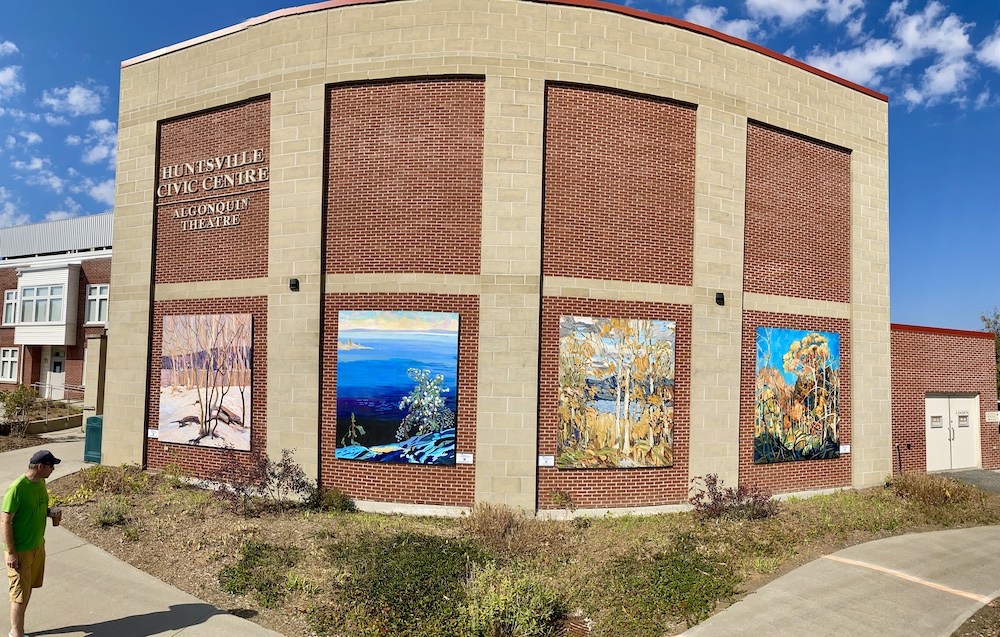
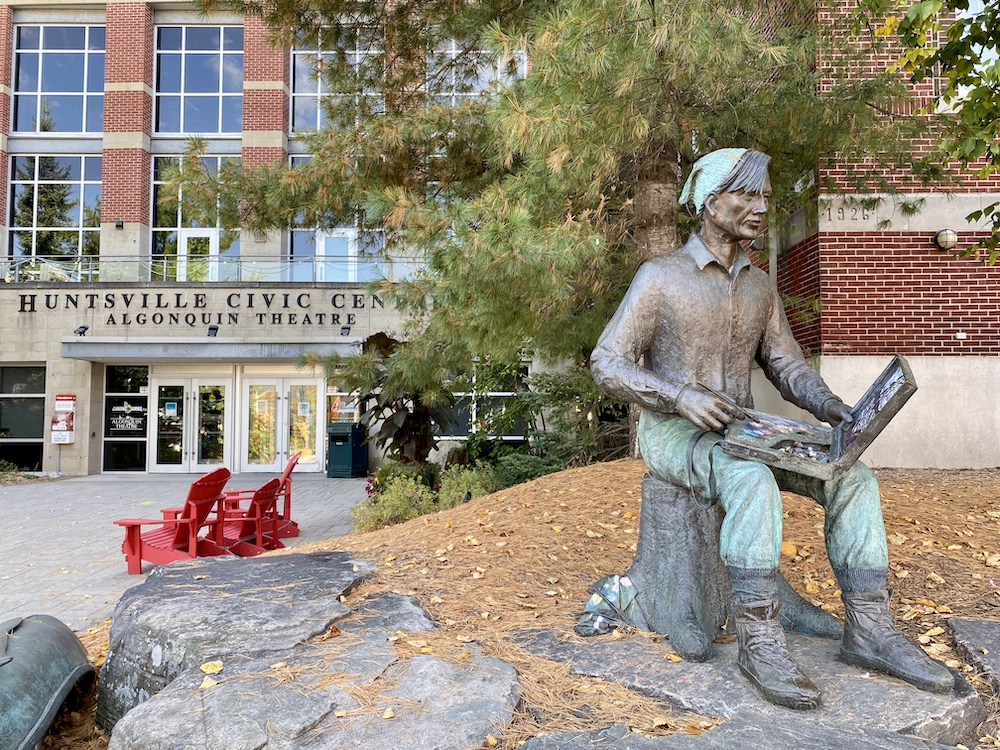
Discover More Tom Thomson
Take a self-guided walking tour in downtown Huntsville. Visit the life-size bronze sculpture of Tom Thomson and see replica murals of The Canoe, Northern River, White Birch Grove, The Pool, The Jack Pine, Silver Birches and Pine Trees At Sunset, part of The Group of Seven Outdoor Gallery. Guided tours are available twice weekly in July and August.
For an award-winning exploration of Thomson’s life, art and death, watch West Wind: The Vision of Tom Thomson.
See original Tom Thomson paintings at these Ontario art galleries:
- Art Gallery of Ontario (Toronto)
- McMichael Canadian Art Collection (Kleinburg)
- National Gallery of Canada (Ottawa)
- Tom Thomson Gallery (Owen Sound)
Visiting Algonquin Park
Those visiting Algonquin Park on a day trip will need to reserve a daily vehicle permit up to five days in advance. Note that weekends in the summer and fall can be quite busy; for a more tranquil experience, consider visiting midweek. A daily vehicle permit is required if you are planning to make any stops within the Park boundaries.
Frontcountry and backcountry camping reservations are required for those looking to spend the night in the Park. There are non-electrical and electrical campsites and roofed accommodations in various campgrounds across the Park, and hike-in and paddle-in backcountry campsites.
All reservations can be made online using the Ontario Parks reservation system.
Recommended Articles
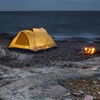
Crown Land Camping
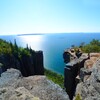
11 Jaw-Droppingly Beautiful Landscapes
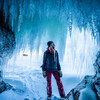
Plan Your Adventure
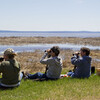
Best Birding in Ontario
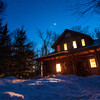
Ontario’s Most Stunning Winter Resorts
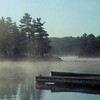
Dog Sledding in Ontario
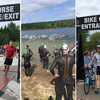
2025 Triathalons
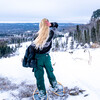
Best Winter Getaways in Ontario

Backpacking Trails in Ontario
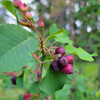
Go Foraging in Ontario

Rise and Glide
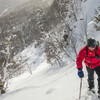
Backcountry Skiing in Ontario
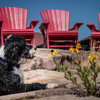
Dogs Welcome!

Best Cross Country Ski Spots
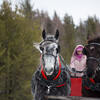
Bundle up for Snowy Horseback & Sleigh Rides
Explore Underground: Ontario Caves
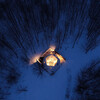
Go Winter Glamping
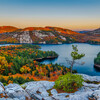
Natural Highs
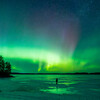
Best Northern Lights Destinations
